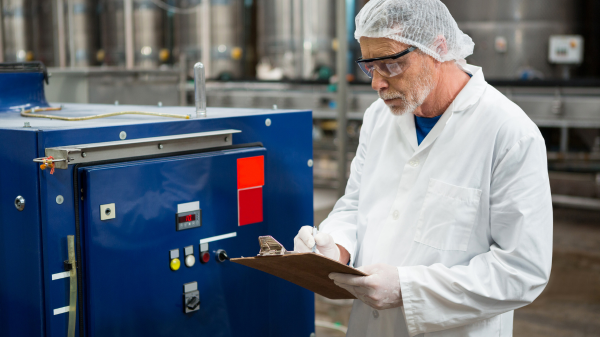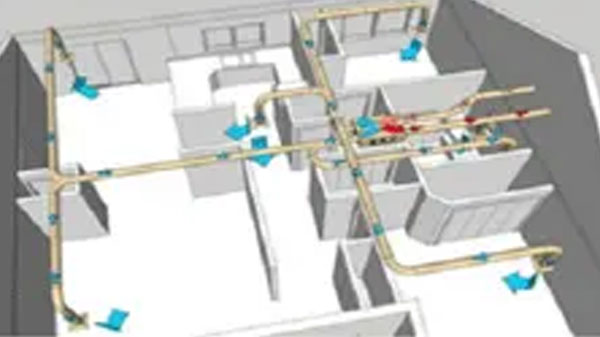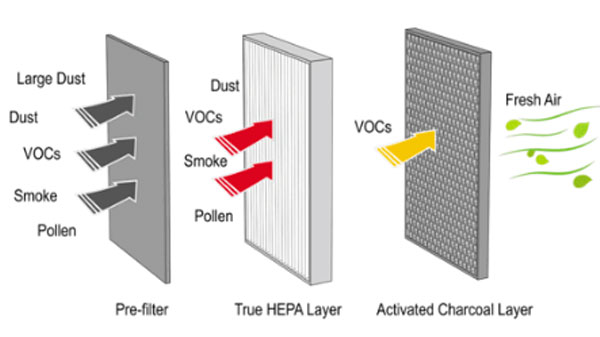
Heat Pumps: Basics of Energy efficient solutions for heating needs!
With the world enduring the effects of Environmental pollutions, many eco-friendly and sustainable ideas have surfaced to tackle these issues. Ban on single use plastics, Electric vehicles, power generation using renewable sources are some of those. One of the such is the Heat Pump.
.jpg)
Cooling Challenges in Data Centers: HVAC Solutions
In today's data-driven world, data centers play a critical role in storing and processing vast amounts of information. As the demand for data storage and processing continues to grow, data centers are expanding rapidly.

Optimizing HVAC Systems for Dehumidification in the Food Industry
In the food industry, maintaining optimal moisture levels is crucial for product quality, safety, and shelf life. HVAC (Heating, Ventilation, and Air Conditioning) systems play a vital role in dehumidification by controlling humidity levels in food processing and storage areas. This article explores the significance of HVAC systems in dehumidification within the food industry and highlights key strategies to optimize HVAC performance for effective moisture control.

The Vital Role of HVAC Systems in Maintaining Food Safety and Quality in the Processing Industry
The food and beverage industry relies heavily on maintaining strict environmental conditions throughout the processing stages to ensure product quality, safety, and compliance with regulations. Heating, ventilation, and air conditioning (HVAC) systems play a pivotal role in achieving and maintaining these conditions.

The Profound Impact of HVAC Systems on Indoor Air Quality and Human Health: Creating a Breathable Environment for Well-being and Productivity
Indoor air quality (IAQ) has become an increasingly significant concern as people spend a significant portion of their time indoors. Poor IAQ can lead to a wide range of health issues, impacting individuals' overall well-being, comfort, and productivity.

The Crucial Role of HVAC Systems in the Pharmaceutical Industry
The pharmaceutical industry is an essential sector that produces drugs, vaccines, and other vital medical products for human health. As a highly regulated and sensitive sector, pharmaceutical manufacturing requires strict adherence to safety and quality standards. The HVAC system is one of the critical components that ensure the integrity of pharmaceutical products.

How To Choose The Right HVAC System For Your Industrial Facility
Industrial facilities have unique HVAC requirements that differ from commercial or residential buildings. These requirements can vary based on the size and type of the facility, the nature of the work being done, and the regulatory standards that need to be met.

Energy Efficiency In Primary Variable System
When the system runs at its full load then all the three chillers run at its rated capacity. Thermostat is located inside the conditioned space / room, when the cooling load is reduced and inside area temperature reaches to the set point then the thermostat sends a signal to the 2-way control valve to reduce water flow rate to some extent.

Effective Ways Of Duct Design
Ducts are conduits or passages used in heating, ventilation, and air conditioning (HVAC) to deliver and remove air. The ducts are used for supply air, return air, and exhaust air. In common practice, we found mistakes in Aspect ratio also bending in ducting is not done correctly. Therefore to reduce the errors, following are the some guidelines for ducting for heating, ventilation and air conditioning.

Inlet Air – Cooling System Of A Gas Turbine
Turbine inlet air cooling is a group of technologies and techniques consisting of cooling down the intake air of the gas turbine. The direct consequence of cooling the turbine inlet air is power output augmentation. It may also improve the energy efficiency of the system. This technology is widely used in hot climates with high ambient temperatures that usually coincides with on-peak demand period.

Basics About HEPA
HEPA filter trapped particle smaller than 0.3 micron also but 0.3 micron size is least well filtered particles.
EPAfine and ULPAfine filters are also critical in the prevention of the spread of airborne bacterial and viral organisms. Used in surgical operating rooms, and other critical medical air filtration applications

How Does One Select HEPA Or MERV Filter For Their HVAC System?
HEPA (High-Efficiency Particulate Air) filters and MERV (Minimum Efficiency Reporting Value) filters are both used to remove particles and contaminants from the air in HVAC systems, but they are designed for different purposes and have different levels of efficiency.